Signs of success from interventions at the pilot site
Signs of success from interventions at the pilot site
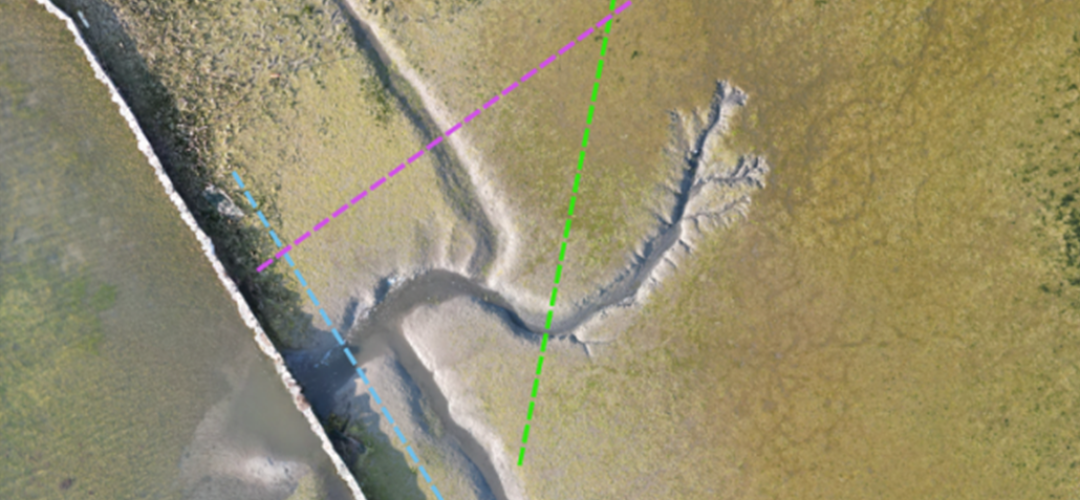
In July 2023 we described some interventions carried out on the perimeter of a recently constructed infill in the central lagoon of Venice, expressly designed to improve communication between the surrounding lagoon and the infill area by promoting the formation of tidal channels.
Channels are considered a key feature of marsh topography, and allow correlations with water dynamics, vegetation cover, and other parameters that are closely associated with ecological functionality.
Ecological functionality refers to the roles and processes that different species, populations of organisms and whole ecosystems perform within an environment to sustain ecological balance and health. It encompasses the interactions among organisms and their physical surroundings and between different species, all contributing (or not) to the provision of values for society such as nutrient cycling and climate regulation. Consideration of this type of functionality is crucial for preserving biodiversity and ensuring the resilience and adaptability of ecosystems to environmental change.
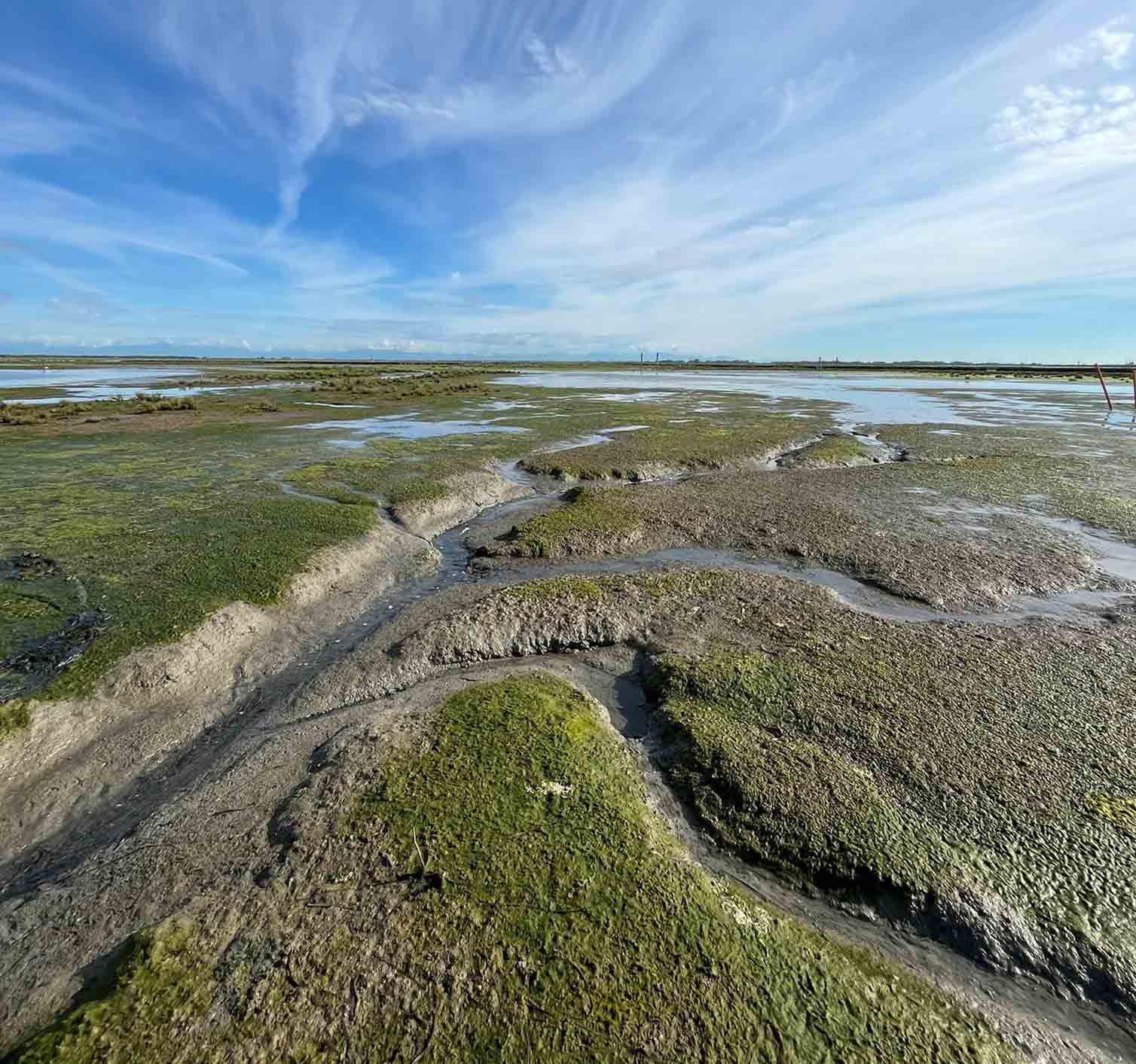
Tidal channel dynamics have been extensively studied in natural salt marshes but more work is needed in reconstructed wetland systems to promote understanding of their fundamental importance to the viability of the infill by facilitating nutrient and oxygen exchanges associated with the general tidal circulation patterns of the lagoon and, consequently, conditions offered to living organisms.
Channels have not yet been integrated in standard infill design and construction in the Venice Lagoon, and the absence of an inner network of creeks and pools is what distinguishes the morphology of artificially constructed marshes from natural ones and consequently there tends to be more erosion and less vegetation cover as well as limited species diversity.
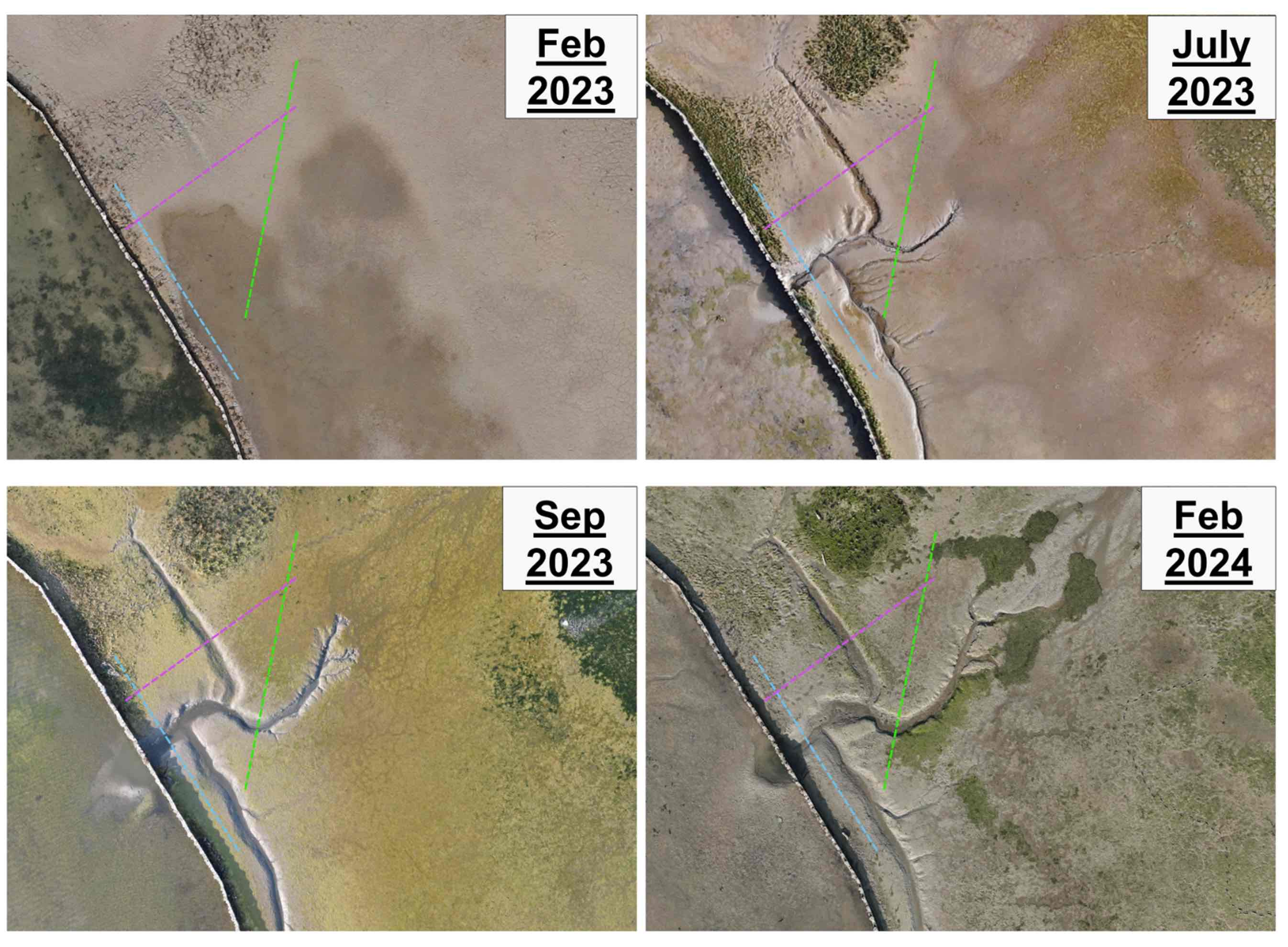
Following the introduction of a few openings in the infill perimeter at the Vital pilot site, the increased exposure to the energy of the tidal currents, wind and waves has triggered the spontaneous formation of new channels. By connecting to lower inner areas of the infill, in line with the laws of physics, a drainage system of large waterlogged areas is now developing as well. Overall this is expected to enhance the above mentioned ecological functionality but the processes need time and the dynamics can produce unexpected outcomes.
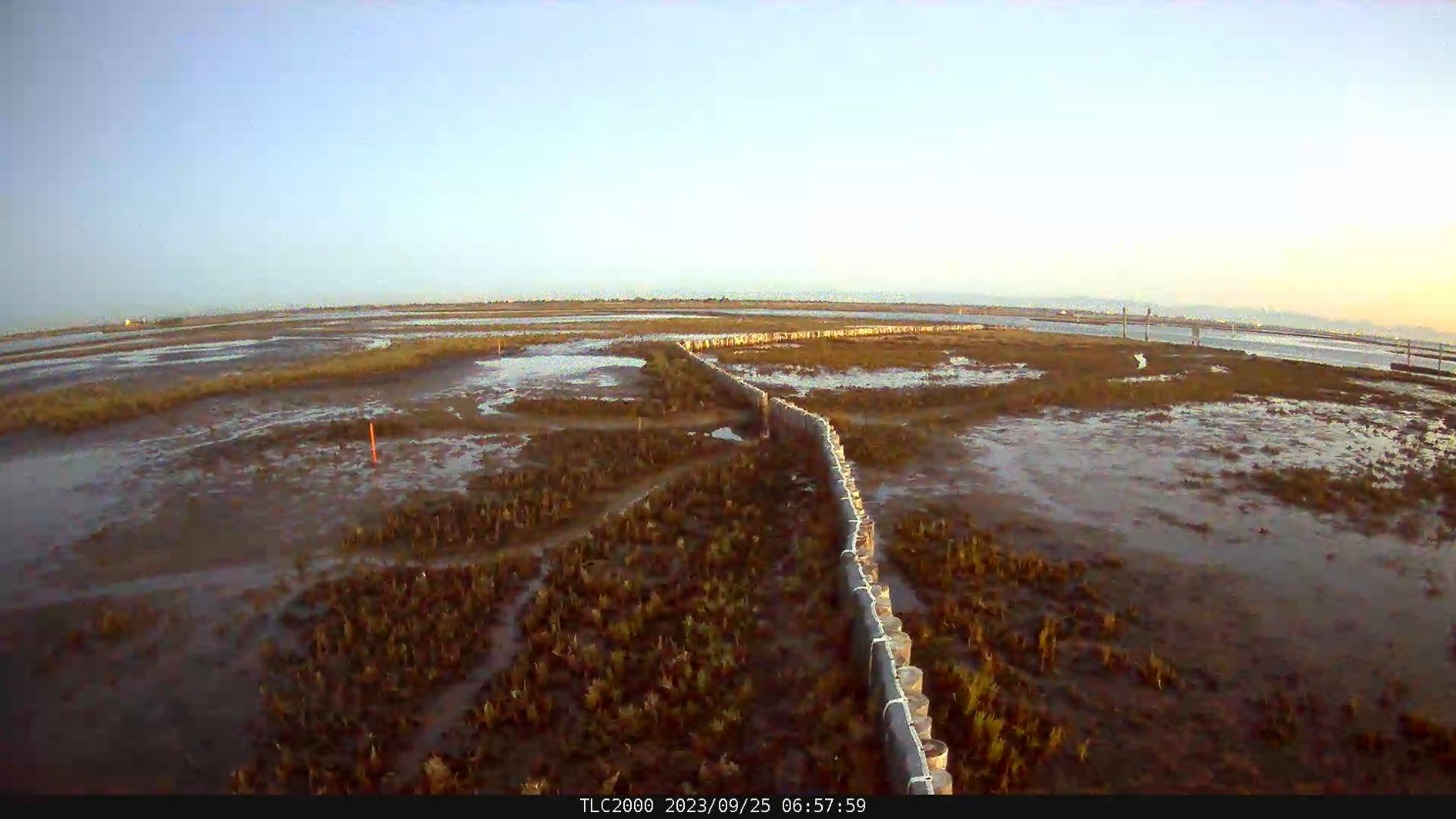
Therefore an articulated monitoring programme has now been established involving seasonal drone surveys, ongoing time-lapse video recording, measurement of water pressure via a network of underground piezometers as well as basic tools to track sediment accretion and erosion.
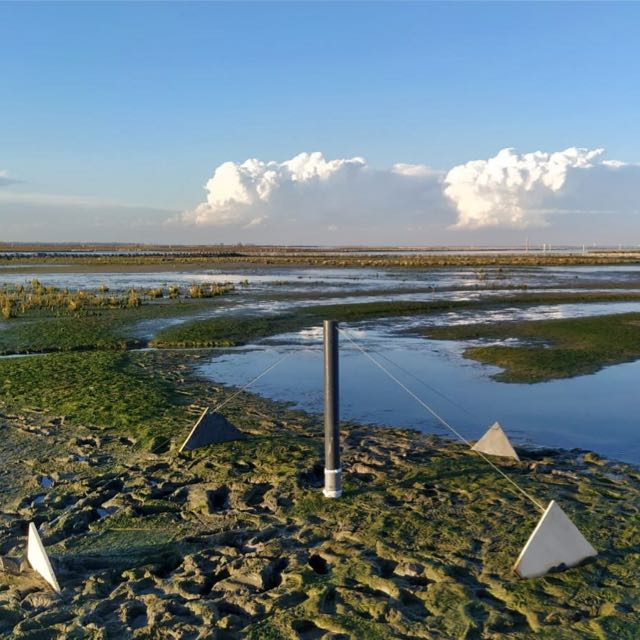
Topographic drone surveys provide the most detailed view of the salt marsh terrain. Multiple drone surveys have been carried out, covering a monitoring period of an entire year. Comparison within the different surveys allows characterisation of the evolution of newly formed tidal channels, both in terms of length, area, volume, and section profile with a spatial resolution of 0.25 m to 0.02 m.
While aiming to collect as much detailed information as possible to be able to analyse and understand trends, technologically simple approaches are also being developed in order to better guarantee the possibility of upscaling to as many other infills as possible.
This work is planned and managed in close cooperation with our technical partner DEME Group and scientific guidance is provided by the University of Padua. Equipment maintenance and data collection is carried out by the “green jobs”, a new category of collaborator being developed by We are here Venice via the WaterLANDS project.
◾